Watches aren't only accurate tools but beautiful accessories that should celebrate their complexity. But this complexity is mostly hidden behind the case-back. Reflecting bridges and surfaces have fascinated humans ever since there have been watches. It goes so far that many connoisseurs these days measure the quality of Haute Horlogerie movements in the number of inward angles. What appears like a modern selling point has actually been a trend that has taken various forms all throughout the history of watchmaking.
March 20, 2024
Unveiling Mechanical Excellence - The History of the Hinged Case-Back

Marcus Siems @siemswatches
Collector, Author, Data Analyst
[Highlights] Unhinging the case-back
- How to showcase the craftsmanship leaving its mark on the movement? -
- A style that originates from early Hunter-Case pocket watches -
- Became popular during WWI and the early days of wristwatches -
- Prominent examples were the Eberhard & Co. Extra-Fort and Patek Philippe Officer Case watches -
1) Why do we peek behind the curtain?
It appears that every new watch these days comes with a see-through sapphire case back. There is an urge in us that we want to see what's going on inside these movements. We might not understand every wheel, gear and cog but it still fascinates us. To me it is the symbiosis of technology and beauty. The complex symphony of ticking components playing with the light on anglage and Geneva stripes.
The way intricate mechanics are connected with the effects of reflecting surfaces has fascinated humans ever since there have been watches. It goes so far that many connoisseurs these days measure the quality of Haute Horlogerie movements in the number of inward angles. Watches aren't only accurate tools but beautiful accessories that should celebrate their complexity. What appears like a modern selling point has actually been a trend that has taken various forms all throughout the history of watchmaking.
Unveiling Timeless Elegance: 1940s Eberhard & Co. Chronograph Watch in 18k Yellow Gold with Hinged Case-Back. A video by Felix Goldammer and a watch from my own collection.
If you want to see the inner workings exhibition case-backs are the norm in our modern world. These were commercially introduced during the 1960s with Omega's "Kleerback" (by Norman Morris for the U.S. market) to
"[...] appreciate the amazing superiority of Omega workmanship"
Other pieces came before Omega but those were predominantly "salesmen cases"* - props that weren't for sale but display only - and the acrylic "cases" often used in Chronometre tests[1].
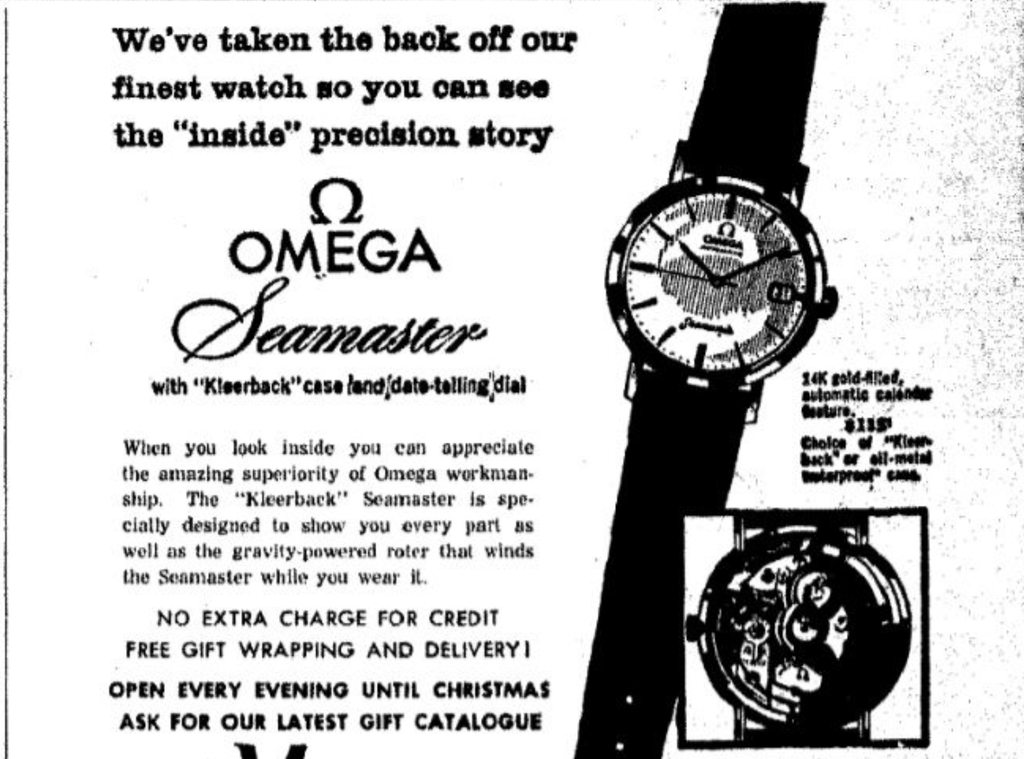 1960s vintage US American advertisement displaying a rare Omega DeVille/Seamaster "Kleerback" with exhibition case-back. Photo Courtesy of OmegaForums.
1960s vintage US American advertisement displaying a rare Omega DeVille/Seamaster "Kleerback" with exhibition case-back. Photo Courtesy of OmegaForums.
2) Origin of the Hinged Case-Back
But of course there's a simpler way to display what's typically hidden... the hinged case-back. The hinge connects the case-back with the rest of the watch case and enables us to peak behind otherwise closed doors.
The origin to these intricate case constructions lies in pocket watches or more precisely - the Hunter-Case pocket watch. The Hunter-Case got its name from its original purpose - protecting the pocket watch glass from breaking during outdoor activities like horseback riding and hunting foxes.
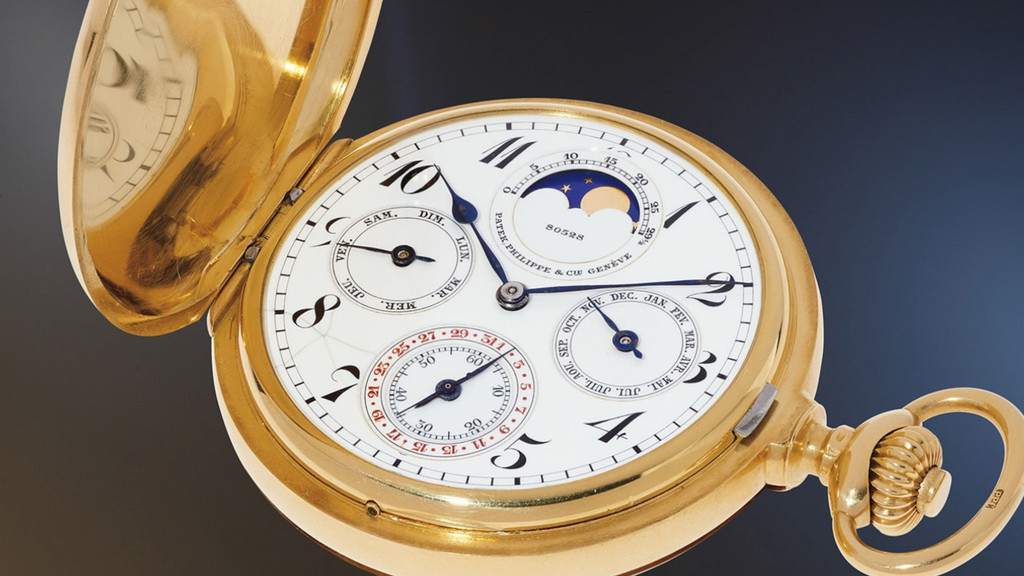 A late 19th Century patek Philippe Perpetual Calendar pocket watch in an 18k yellow gold hunter case. Photo Courtesy of Phillips.
A late 19th Century patek Philippe Perpetual Calendar pocket watch in an 18k yellow gold hunter case. Photo Courtesy of Phillips.
The idea is very simple: You add a spring-loaded lit on top of the glass covering your watch face for additional protection. The same concept is used for the case-back. It thus balances durability and legibility in this special pocket watch archetype.
3) From Trench to Trend
Wristwatches gained a lot of traction during the first World War. Precise timekeeping became essential to synchronize attacks between ground soldiers and heavy artillery miles behind the trenches. Thus, already in 1916 a quarter of soldiers wore wristwatches. And the British Ministry of Defense started to equip every man with wrist worn timepieces in 1917[2]. Many of these pieces were originally pocket watches attached to leather straps and Half-Hunter Cases were particularly convenient for two reasons:
The protective layer over the dial being the obvious first. But a second factor added to the convenience: Hunter-Case watches typically featured movement layouts that had the crown at 3o'clock and not 12o'clock. The 3o'clock position made it a lot easier to strap the watch to the wrist and improved the handling while worn.
 A 1915 advertorial from Waltham displaying their "Wristlet" (the common name for wristwatches at the time), "The Best Watch in the Trenches". Photo Courtesy of HIFI Archiv.
A 1915 advertorial from Waltham displaying their "Wristlet" (the common name for wristwatches at the time), "The Best Watch in the Trenches". Photo Courtesy of HIFI Archiv.
4) A Broader Audience
After the war was over men started to wear more and more wristwatches... Already in the USA of 1930 there were supposedly 50 wristwatches for every pocket watch sold[2]. Wristwatches became a status symbol and the trench style became chic. The entire concept was upcycled though - you wouldn't need protection at a restaurant or a gala dinner but the construction would made it possible to showcase the fine craftsmanship of your timepiece.
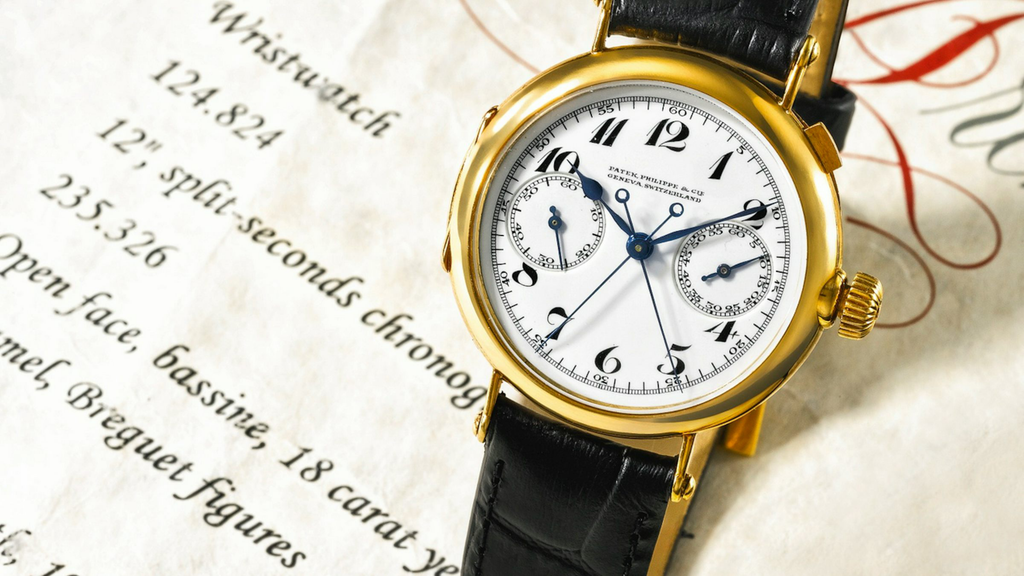 The earliest known Split Seconds chronograph wristwatch - ever - by Patek Philippe from 1923. It is potentially a prototype movement in collaboration with Victorin Piguet and comes in a Officer style case with hinged case-back. Photo Courtesy of Sotheby's.
The earliest known Split Seconds chronograph wristwatch - ever - by Patek Philippe from 1923. It is potentially a prototype movement in collaboration with Victorin Piguet and comes in a Officer style case with hinged case-back. Photo Courtesy of Sotheby's.
5) Popular Examples
There are several examples of this trend evident but two brands truly made this style their own. The first is Eberhard & Co, makers of the third ever two-push chronograph movement in 1935, the first that could be stopped and restarted again[3]. Eberhard & Co made a couple different designs with hinged case-backs but the (Pre-)Extra-Fort series is probably the best known. These are split-second chronographs with a slider at 4o'clock to briefly stop timing and were introduced in the early 1940s. These were relatively large at the time with 39.5mm diameter and gold cases made by Favre & Perret (hammerhead hallmark #115).
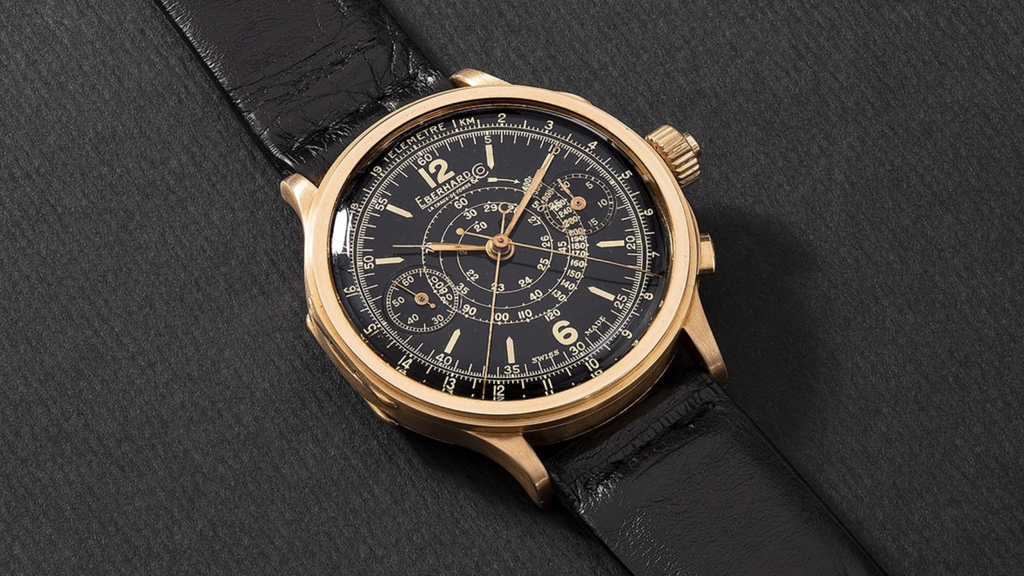 An early series (Pre-)Extra Fort 39.5mm split-second chronograph in 18k gold case (#115, Favre & Perret) with hinged case-back. Photo Courtesy of Phillips.
An early series (Pre-)Extra Fort 39.5mm split-second chronograph in 18k gold case (#115, Favre & Perret) with hinged case-back. Photo Courtesy of Phillips.
The second brand is Patek Philippe. As you can also see above their first split-second chronograph came with a revolving case-back but it's the modern interpretation that is coming full circle on this detail. Introduced a good 10 years ago at Baselworld in 2013 the Calatrava reference 5227 re-introduced the hinged case-back into modern catalogues.
 The back side of a modern Patek Philippe ref. 5227J Calatrava with hinged case-back and sapphire crystal. Photo Courtesy of Patek Philippe.
The back side of a modern Patek Philippe ref. 5227J Calatrava with hinged case-back and sapphire crystal. Photo Courtesy of Patek Philippe.
6) Durability vs. Elegance
The hinged case-back is the perfect watch paradox... It's a design that's meant to showcase the intricacy of the underlying mechanics. But it's also potentially hurtful to these exact mechanics because it is tampering with the integrity of the case itself. It is ultimately inviting the elements to damage the movement. At the same time the original concept (Hunter-Case pocket watches) was improving sturdiness.
In other words, it is complete nonsense to add such a detail! It's made solely to impress... But may I ask what's wrong with that? That's also a big part of what makes it so cool. It is like the window on your washing machine. You know your laundry is getting clean even without you checking but there's something hypnotizing viewing it go round and round and round.
 If you can live with the little joint on the case at 9o'clock these pieces offer so much "Wow" factor. Photo SiemsWatches private collection.
If you can live with the little joint on the case at 9o'clock these pieces offer so much "Wow" factor. Photo SiemsWatches private collection.
It doesn't always have to be convenient! Aren't we all in this hobby because the inner working attract us just as much as the outer appearance? A fitness tracker is convenient. But if you care for watches, you care for their anachronistic vibe and the unnecessarily complicated nature of the kinetics involved in making each and every one of them tick. If you geek out about mechanical watches a hinged case-back is the ultimate window into their history.
 And yes, it still wears super comfortable. Photo SiemsWatches private collection.
And yes, it still wears super comfortable. Photo SiemsWatches private collection.
* For example Rolex equipped some of their earliest Perpetual Movement Oyster watches with display case-backs as early as 1931... but those were as well not for sale.
References
[1] The Curious Case of Display Case Backs; Michal Kolwas, Waha Watches [Link]
[2] How The First World War Shaped The Watch Industry; Eric Mulder, Coronet [Link]
[3] About Us; Eberhard & Co. [Link]
All rights on text and graphics reserved to the Author.




















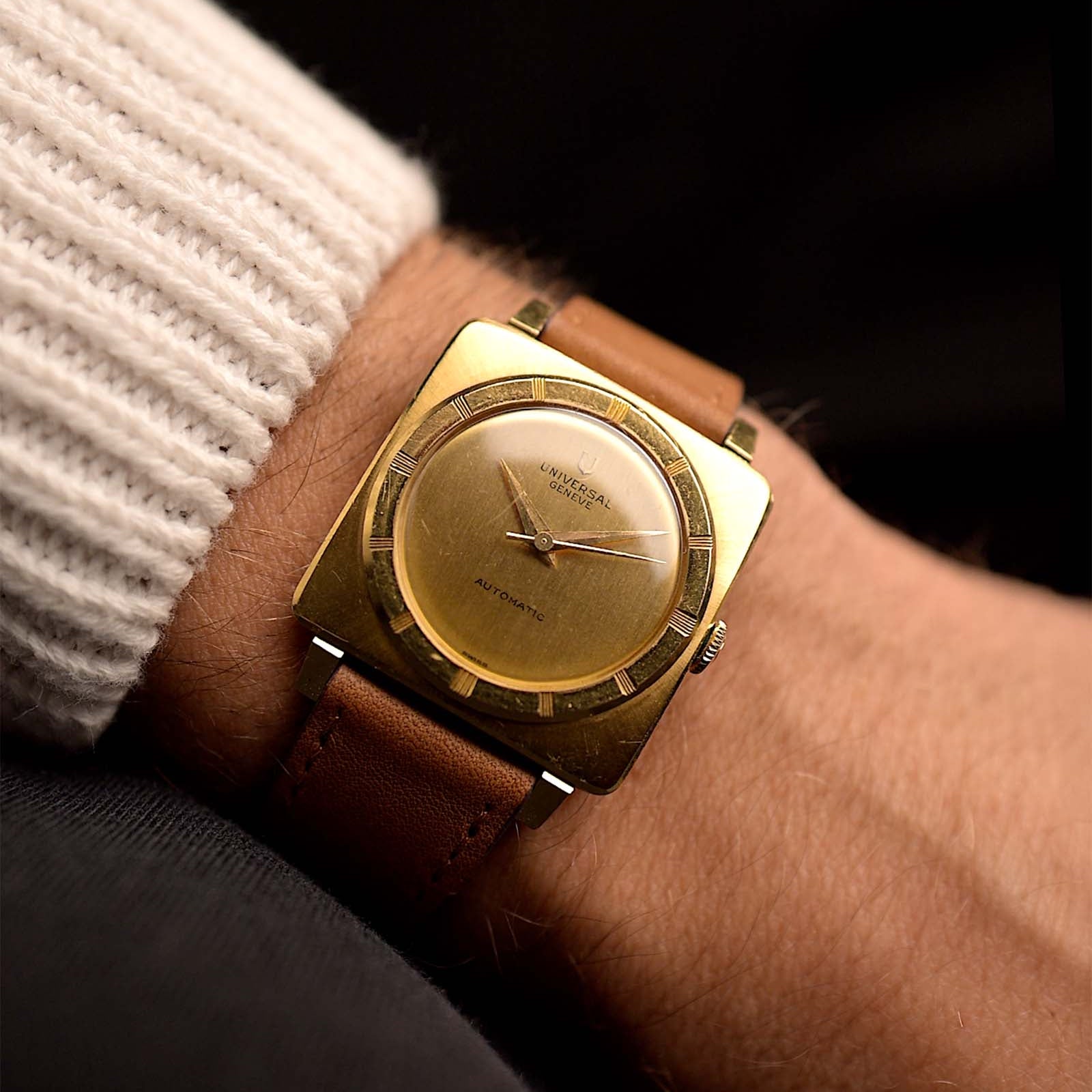



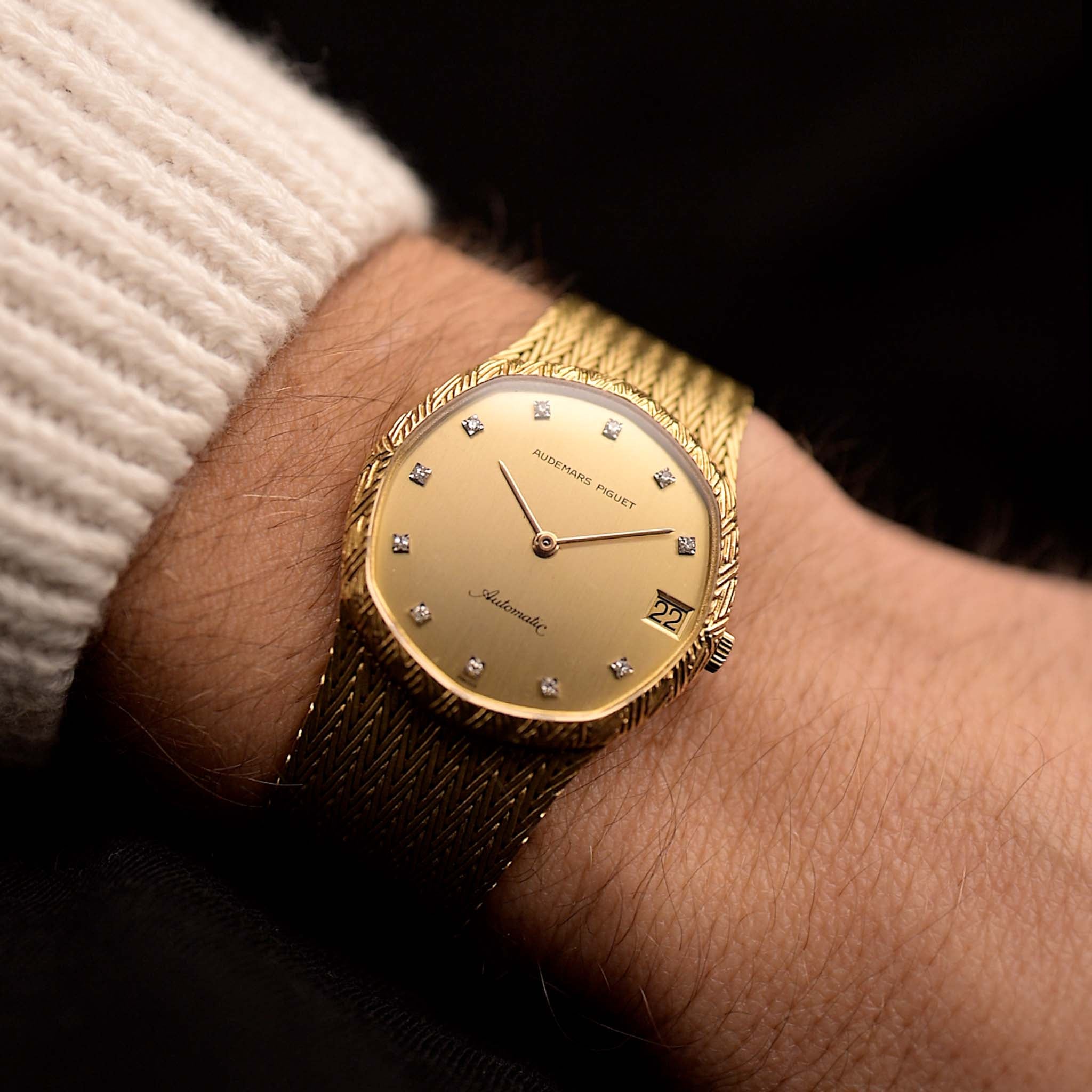



Leave a comment